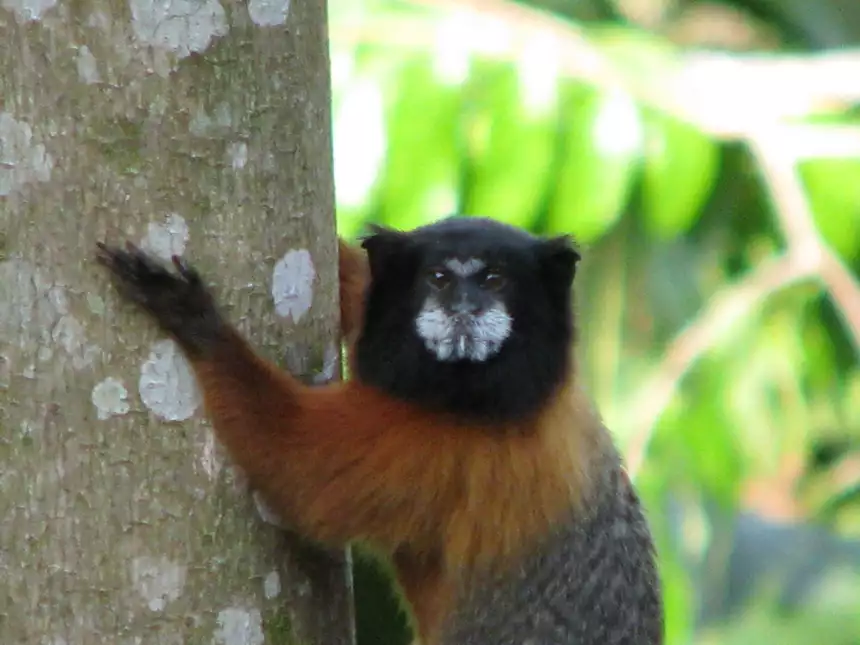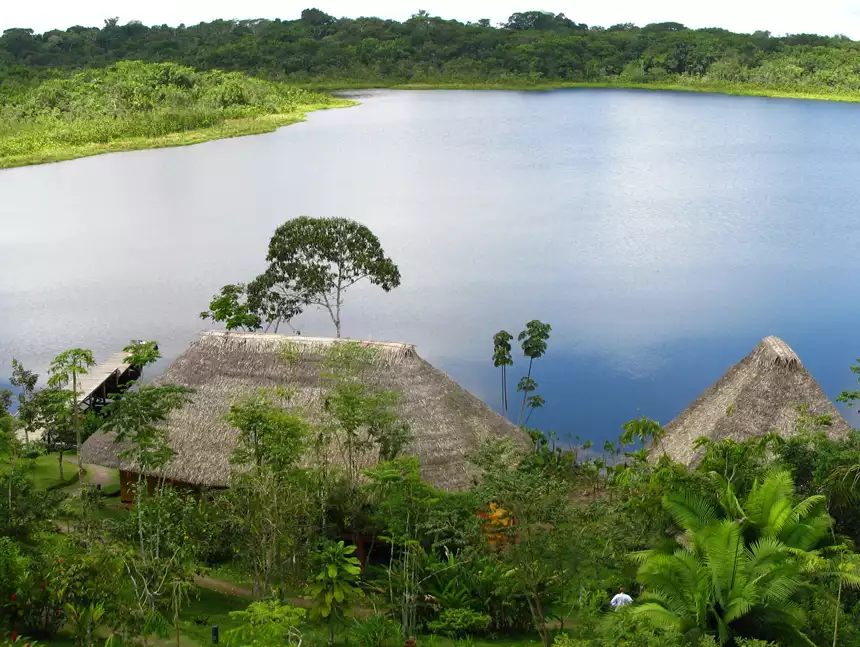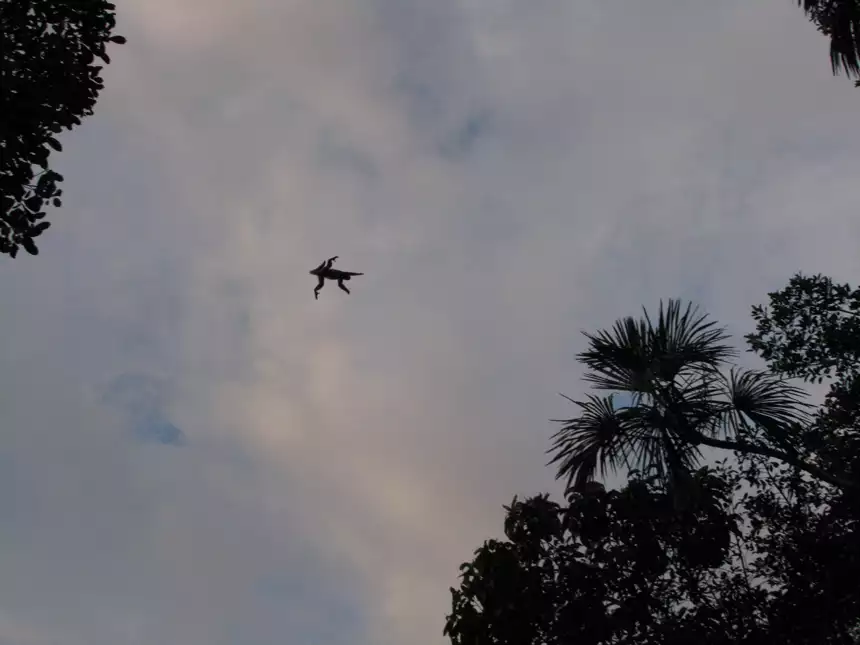AdventureSmith Explorations Adventure Specialist Andrew Browning reviews his Ecuador Amazon Adventure at Napo Wildlife Center.

Sometimes we saw so many monkeys I didn’t know where to point my camera.
The diversity of Ecuador’s geography is quite amazing and is enhanced by the fact that one can explore the Galapagos Islands, the snow-capped Andes Mountains and the Amazon rainforest without leaving the country’s borders. During July and August of 2009 I was fortunate to experience these unique areas on a trip with AdventureSmith Explorations and our partners in conservation the Rainforest Alliance. This expert review is focused on my exploration of Ecuador’s Amazon rainforest, and if you are interested you can also read my separate review of the Galapagos Islands aboard the Beluga here: Galapagos Expert Review.
My Ecuador Amazon Adventure began with meeting the Rainforest Alliance group in Quito after an 8 day Galapagos Islands Cruise. We had a welcome dinner with the Quito tourism board and the next morning we boarded our morning flights to the town of Coca which is located on the banks of the Napo River. Rivers in the Amazon are the main routes for transportation and as such there are barges and various small boats moving between small settlements and towns along the river. We arrived in Coca and were met by Miguel our bilingual guide from the Napo Wildlife Center and also Jiovanny who is a founding member and the General Manager of the Napo Wildlife Center; a shining example of a community run sustainable tourism operation located in the Heart of Yasuni National Park.

Together with our guides we drove to the dock on the Napo River to board the motorized dugout canoes for transport down the river. We boarded the covered dugout canoe and we were off into the mystical Amazon rainforest. Traveling in comfort I could not help but think of the early explorer’s who came to this area in search of resources and lost civilizations. The fact that we can enjoy the rainforest as a pristine ecosystem teeming with unique birds and wildlife, while early explorers recount the Amazon as a living green hell, is truly a paradox.
The Napo Wildlife Center is known for their expert guides and during our 2 hour trip down the river they were already pointing out camouflaged birds and providing insights into the area we were traveling through.
The Añangu indigenous community is the owner and operator of the Napo Wildlife Center and en route to the lodge we stopped at the area where the main community is built. This was a very important visit because we were able to see the physical benefits that their immense efforts have yielded. Through owning and operating the lodge themselves, they have been able to construct new schools, soccer fields, and housing from local materials.
Getting to the Napo Wildlife center is part of the adventure and we were brought to the lodge first by motorized canoe down the Napo river, and then by silent paddle canoes up the Añangu river to where the lodge is located.
Arriving at the lodge at sunset we spotted our first Caimen in the water and I had my first of many experiences where there was so much happening that I could not take photos of everything. This happened frequently as I was trying to choose which monkey to photograph or if I should shoot the lagoon as the sun sets or the Caimen alongside our canoe. I like to think I made the right choices on the fly.

The next few days we spent here were absolutely incredible! Early mornings are necessary in the Amazon because it is the best time to see tropical birds and other animals who are most active around sunrise. Certainly a highlight of any stay at the Napo Wildife Center is a trip to the Canopy tower with their staff of expert bilingual guides. At first I tried to keep up with marking the birds off of the lodge list, but we were seeing so many that I needed the guides help after to check them all off. Among my favorites that we spotted were the White Throated Toucans and the Many Banded Aracaris. The lodge has programs that keep travelers exploring even after dark. I was really impressed when we did our evening canoe trip which was timed to see how the moments after sunset bring about the species of the night.
A focus of my trip to the Napo Wildlife Center was to learn about the award-winning sustainable initiatives that the community has employed at the lodge. Natural water filtration systems, advanced systems for electricity, and gravity pressurized water are some of the things that they have done to make the lodge an example of sustainable tourism. We were taking our grand tour of these facilities when from the banks of the lagoon; one of the guides rushed up to the lodge to inform us that the Giant Otters were visible and swimming in front of the lodge.
We all grabbed our cameras and went out in one of the canoes for a closer look. I love the experiences when everyone is in such awe that no one speaks until afterward. This quick look at the giant otters led our guides to paddling the canoe over to the bank so we could watch a troop of Monkeys making its way through the forest. The truly amazing part of this was that they were jumping from tree to tree over the small river that we were floating on. One after another they jumped, and we got to enjoy about 20-30 monkeys doing what they do best. This was a surreal rainforest experience and I can say that it was my favorite moment of the trip.

Between these daily excursions we were treated to wonderful meals prepared with fresh local ingredients. The meals were served in the open air restaurant and included Ecuadorian traditional fare as well as international flavors. The service at the lodge was wonderful and attentive. The kitchen, bar, and service positions are filled by local people from the Añangu community which is another way that the community is able to benefit from the hard work put forth to preserve their land rather than exploiting the resources within.
Awakening early on our final day was necessary and we departed the lodge shortly after breakfast. The canoes brought us back up the Napo River and to Coca where we met our flights back to Quito. As I had lunch and coffee at a café in Quito around 1:30pm, it was hard to believe that I was in the Amazon rainforest only a few hours before.
For a unique and memorable rainforest experience, I can highly recommend that travelers consider visiting the Ecuadorian Amazon and staying at the Napo Wildlife Center. The biodiversity of species is incredible and new discoveries are always being made. Recently the motion camera trap project that was started by the Napo guides has captured images of a rare black jaguar roaming the jungle and while guests and staff have never seen it, the motion cameras have shown that this area is active with jungle creatures small and large!
This Amazon lodge review was written by an AdventureSmith Explorations crew member. Read all AdventureSmith Expert Reviews for more trip reports, or contact one of our Adventure Specialists to learn more about these small ship cruises and wilderness adventures: 1-800-728-2875.
Comments will be moderated and will appear after they have been approved.